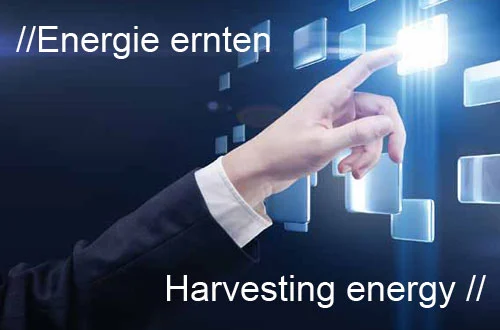Harvesting energy
A network coordinated by Adlershof computer scientists is working on how to harness ambient energy so that sensors, radio modules, and computer processes can perform complex health sector, facility management and logistics tasks without the need for an external power supply.
We are surrounded by energy – we just need to tap into it. Sunlight, vibrations, heat – when we press a switch, we expend enough energy to transmit a radio signal. Power cables and batteries could soon become superfluous for sensor networks, switches, and monitoring systems – a not too distant future that Professor Alfred Iwainsky, Board Chair of GFaI, the Society for the Promotion of Applied Computer Science, finds fascinating. He runs the network MoniSzen where three dozen players are working on distributed, mobile sensors, radio modules, and processors that perform complex monitoring tasks independently of external power supplies. Experts speak of “ambient energy for ambient intelligence”. The parties involved include the Adlershof companies IQ wireless, FEAD GmbH, the Society for the Promotion of Research into Natural Sciences and Technology GNF, and the Department of Computer Science of Humboldt University in Berlin. “The subject is a mega trend,” confessed Iwainsky. This, however, is far from being known to everyone, which is why the network hosts workshops and is represented at trade fairs like Pflege+Homecare Leipzig. “This technology presents excellent opportunities in particular for giving those in need of care a better and more mobile life,” explained Iwainsky. For example, the network is also working on a weighing mat that provides its own energy. Like a bathroom rug, this intelligent mat lies on the floor and, as soon as it is stepped on, radios data to the doctors that can then analyse these weight data for important clues as to the well being of their patients. The tricky part, though, is calculating the exact weight from the raw data generated by the pressure on the mat – a classical task for computer scientists. This subproject falls in the ever more important category of “ambient assisted living” that allows the ill and persons in need of care to remain at home longer in their familiar surroundings. The network is therefore pushing ahead with cableless and batteryless switches and contact sensors for windows and doors. Iwainsky explained: “Especially the nursing and home care professions will find it interesting when switches can be secured with sticky tape anywhere in the room, for example on seats, beds, and cupboards.” This could also benefit researchers at the Fraunhofer Institute for Computer Architecture and Software Technology (FIRST), who are working on assistance systems tailored to the needs of the elderly in the project “SmartSenior”. “Yet the subject will also have a major part to play in the future of logistics, facility management, and building surveillance,” explained Dr Anko Börner of the German Aerospace Centre DLR, a partner of the MoniSzen network: for instance, when sensor networks monitor bridges for imminent damage or the foundations of buildings for weakening caused by moisture. In logistics, active RFID tags on containers could draw their energy from the vibrations generated during transport. RFID is the name given to the automatic identification and localization of objects and living beings by means of electromagnetic waves. Yet conceivable is much more. Iwainsky: “The use of ambient energy is still a field of activity for pioneers known only to the few.” But that will all change with the network.
by Chris Löwer
Link: www.gfai.de
